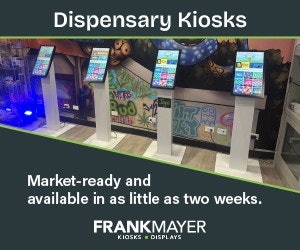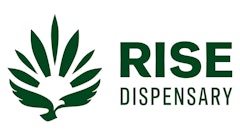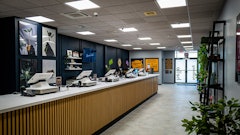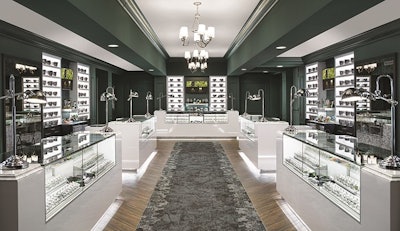
The right lighting in a dispensary can improve customers’ moods—which can lead to more positive behavior inside the dispensary and even create repeat customers—as well as positively affect employees, who may sleep better because of the dispensary lighting, explains Robert Soler, M.S., vice president of human biological research and technology for Biological Innovation and Optimization Systems (BIOS), a science-based company that creates LED lighting for a variety of applications.
But how can you achieve that ideal lighting in your dispensary? Here are nine tips from industry experts to help you change your lighting—and your business—for the better.
1. Think about what will make your customers most comfortable.
When Dockside Cannabis thought about the lighting in its dispensaries in Seattle and Shoreline, Wash., the company wanted to “portray openness, safety and an inviting atmosphere” to its customers, just like they would experience in any other retail setting, says owner Aaron Varney. “Dispensaries that want to give their customers a sense that visiting … [the dispensaries] is normal retail behavior will use lighting accordingly,” he says.
2. Use higher illumination on your products.
“Products that you want to feature should be lit [more brightly] than other products,” says Soler. Why? Recent research from BIOS uncovered that people have powerful photo-receptors in their eyes linked to their gaze—photo-receptors that are attracted to bright lights. Put simply, photo-receptors are “the reason why—when we drive at night—we tend to look directly at oncoming headlights or street lights,” he says. “This phenomenon can be used to highlight products.” For example, when you place higher illumination on some products and less on others, your customers’ eyes will be drawn to the highlighted products, which can drive sales exactly where you want them.
Dockside Cannabis uses movable lights on a track to highlight products that may be on sale, or that it wants to push. According to Varney, track lighting is “an effective and economical way to do highlighting.” If you’re not into track lighting, “rope LEDs—inside your display cases—are another very effective tactic,” he says. “But be aware: I've found you get what you pay for in terms of light quality with rope LEDs. The temperature and intensity vary widely.”
3. But don’t highlight products too much.
If the product you want to highlight is flower, be careful with the intensity of the light you cast on it, Varney warns. “Over time, flower will get ‘light burned’ and turn from a healthy shade of green to a yellowish brown, which no longer looks attractive,” he says. “You can mitigate this by changing out products at regular intervals or using a switch so lighting is only on when there are customers inside.”
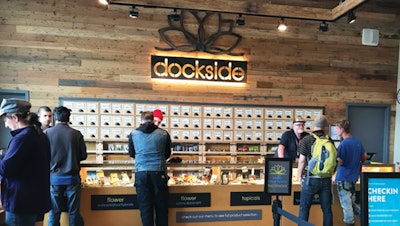
4. Consider your colors.
According to Megan Stone, owner of The High Road Design Studio, “with new LED technology, there is the possibility to fine-tune the lighting within a space, adapting the color of light to the interior environment, and helping to create whatever mood that brand experience calls for.” You could, for example, choose warm colors of light to highlight any natural items in your dispensary and bright, white lights to bring a modern feel to furniture and waiting areas, Stone suggests.
Dockside Cannabis has “strayed away from using colored lights,” Varney says, “because we want the focus to be on the product and for the lighting to support that versus distract from it.” They use “warm, full-spectrum light versus the colder, blue shop-light feel,” he explains.
5. Lighting uniformity is key to feeling safe.
In general, “people find dark spaces to be unsafe,” Soler says. So, for example, “an excessively dark corner in your dispensary may make some customers feel unsafe.” To encourage the feeling of a safe space, you should try to keep the dispensary as uniformly lit as possible—i.e., eliminate dimly lit areas. Lighting the walls of your dispensary is effective too, Soler says. “Lighting the walls provides a heightened sense of brightness, which makes people feel safe,” he explains.
What’s more, bright, uniform lighting protects your store. “The light-and-bright approach is not only good for the customer experience—it is a good deterrent as well,” Varney asserts. “Most, if not all, cannabis dispensaries are required to have security cameras—and when there is plenty of light and plenty of [visible] security cameras, your dispensary is not an inviting atmosphere for criminal activity.” For safety purposes, don’t forget lighting in your parking lot, Varney adds, plus “any areas that your staff needs to utilize on a daily basis.”
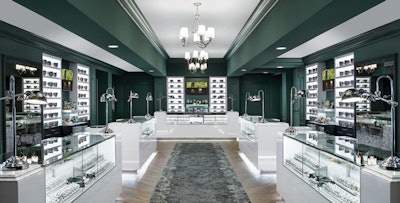
6. Use natural light to your advantage.
In addition to planned, artificial light, you should consider allowing natural light into your dispensary, says Varney. “Stereotypes play a big role in these early years of legalization—and much of it is still unconscious,” he says. “Illegal activity may utilize the protection of the shadows, but we're welcoming in a new era in the cannabis and human relationship. Legalization promises a more peaceful relationship where we do not need to rely on the protection of the shadows.”
In other words, Varney continues, “there is nothing to hide—and lighting is a powerful extension of this reality. So, whenever possible, utilize big windows to bring in natural light, and let people see that cannabis retail is not something to be avoided because of those outdated stereotypes of it being a dangerous drug that only criminals partake in.”
7. Look to other retailers for inspiration.
When you’re drafting your lighting plan, use other retailers—and not just other dispensaries—as inspiration. “Think of what other retail experiences you love and take a visit with lighting in mind,” Varney suggests. “Go to your favorite grocery store with that in mind and observe how they highlight the produce section or areas where they are doing big promotions. These businesses have already hired lighting experts, and you can glean some of the lessons just by being a keen observer.”
8. Make sure your dispensary is equipped to handle your lighting.
The kind of lighting used in the most impressive dispensaries requires additional electrical and cooling capacity, says Varney. So, “keep in mind the additional electric and heat load you'll put into the space when adding lights, and make sure you can add electrical and cooling capacity if needed,” he says. “You don't want to fix one problem—poor lighting—just to cause another problem.”
9. Hire the right pro to help you.
You may be able to design the right lighting for your space, but if you want input from a professional for an update or initial design, be careful with whom you contract. “Lighting design is a specialty service, and many design professionals don’t do lighting design,” Stone cautions. “Be sure you ask your retail designer or architect if a lighting designer is part of your project’s team, so that your unique lighting needs as a cannabis retailer are properly planned for in the store's design.”




